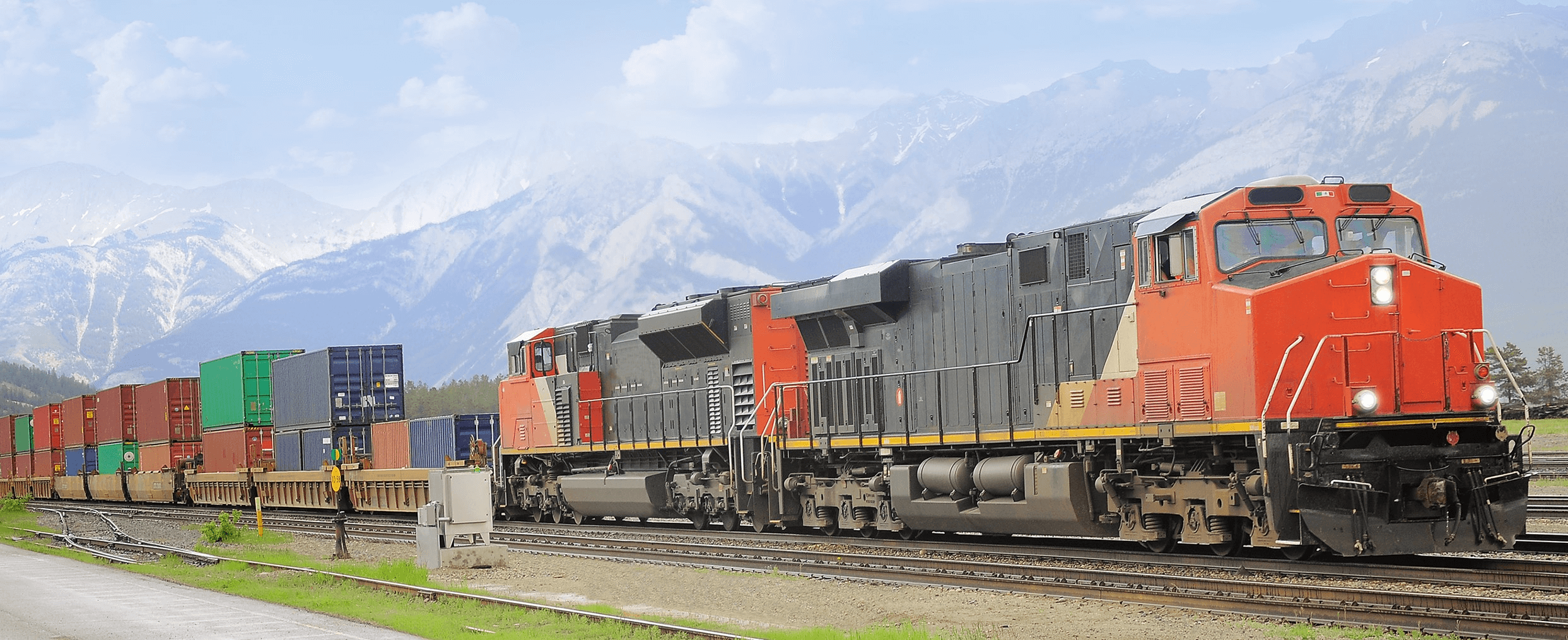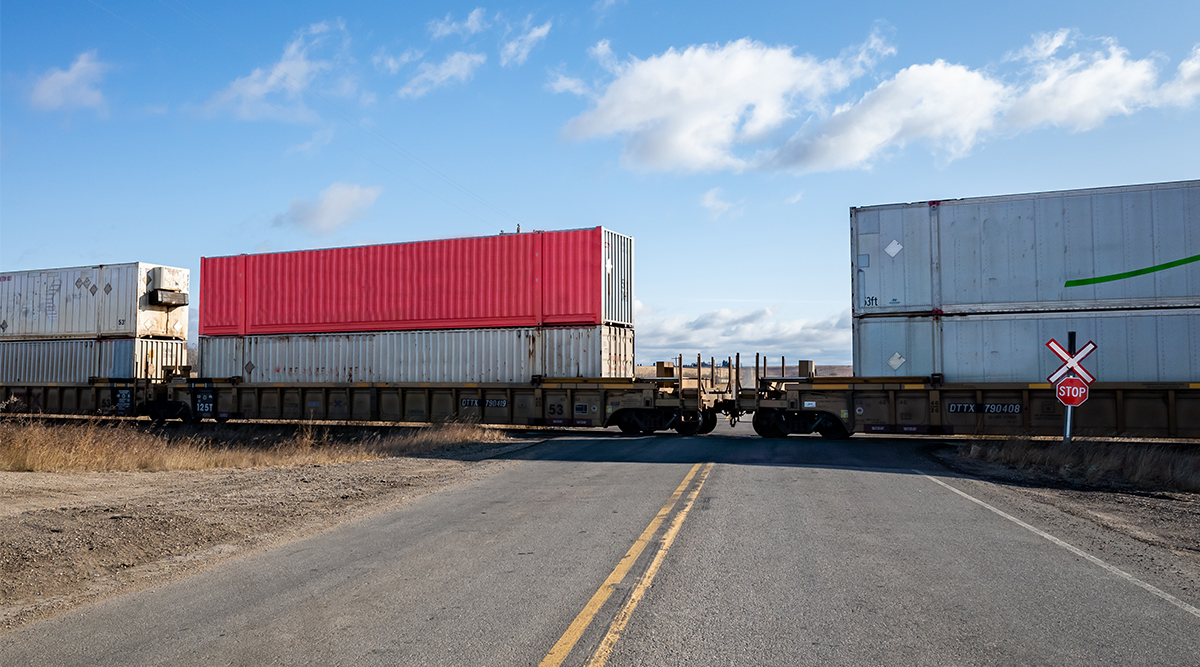Issue 27: June 2022 LMI Report, White House Intervenes in Rail Labor Dispute & More
A Word from Legacy
Ocean and rail and trucking, oh my — the tail end of June and beginning of July have seen major labor disputes across three of the four major types of freight transportation.
This likely comes as little surprise to any reader keeping an eye on the news; amidst international conflicts, COVID-related lockdowns and rising inflation, the workers responsible for keeping the global economy and supply chains moving are reaching a breaking point, and those in the logistics sector are no exception to the rule.
But what are their demands, and how will these various labor movements impact shippers? We explore that and more in this month’s Shipment.
Market Update
LMI Index Dips Below All-Time Average for the First Time Since July 2020
The June 2022 Logistics Manager’s Index (LMI) reads at 65.0 — 2.1 points lower than the May 2022 reading, and the first time in nearly two years that the LMI has fallen below the all-time average of 65.3.
Although this represents a healthy rate of expansion — as a general reminder, any reading above 50.0 is indicative of logistics industry expansion — that expansion has slowed significantly. To illustrate this point, one need only compare this month’s reading to March 2022’s all-time high reading of 76.2. The LMI report attributes this slowdown to reduced demand in the transportation market (this month’s Transportation Capacity index reads at 61.7), however inventory growth and its associated costs remain high.
As noted in our intro, the current contract between ILWU and PMA has expired and contract negotiations remain ongoing, despite outside pressure from industry groups and the Biden administration. Although this remains an important topic of conversation within the logistics industry, shippers would also do well to redirect some of their attention to strikes at Dutch and German ports, which have led to a pile-up of car and furniture exports, and intermodal rail backlogs.
The LMI report notes that these rail backlogs, in particular, “[demonstrate] the limited capacity of intermodal to cover for increasingly expensive trucking.” West Coast ports have attempted to mitigate this issue by reducing “free” time that containers may sit at its terminals, while the federal government has introduced a new regulation that will “make it more difficult for shipping companies to refuse exports.”
Port and rail congestion has prevented retailers from moving inventory, contributing to high inventory levels; the Inventory Levels index increased by 2.5 points to 71.8, marking the fifth reading over 70.0 in the first six months of 2022. Without the ability to move products and with reduced consumer spending in the retail sector — consumers bought 6% fewer retail items in Q1 ‘22 compared to Q1 ‘21 — many retailers are facing the looming threat of bankruptcy. High inventory levels also have a direct impact on warehousing metrics, driving Warehousing Capacity down by 4.9 points, marking its 22nd consecutive month of contraction, and causing Warehousing Prices to remain strong, at a reading of 78.4.
The LMI report also notes softening in transportation markets, with Transportation Capacity down 2.9 points to a reading of 61.7 and Transportation Prices down 3.9 points to a reading of 61.3. In terms of prices, the spread between truckload contract and spot rates (as of the last week of June) was 73 cents per mile. Transportation Utilization is similarly down 5.9 points from May 2022, with a current reading of 58.4 — the first time that number has dropped below 60.0 since May 2020.
While Transportation indices are on the decline, inflation continues to rise, causing consumers to shift their spending away from elastic goods. Much of this inflation can be attributed to supply-driven issues — chief among the lack of oil due to the ongoing Russian invasion of Ukraine driving up fuel prices — as opposed to demand-driven shortages. Though the Biden administration has proposed a fuel tax holiday to offset high fuel costs, there is concern amongst logistics industry professionals that the corresponding savings would be marginal relative to the increases we’ve seen, and that it would siphon funding away from the recently passed infrastructure spending bill.
For a complete overview of the June 2022 LMI across all indices, please refer to the chart below:
| LOGISTICS AT A GLANCE | |||||
| Index | June 2022 Index | May 2022 Index | Month-Over-Month Change | Projected Direction | Rate of Change |
| LMI® | 65.0 | 67.1 | -2.1 | Growing | Slower |
| Inventory Levels | 71.8 | 69.3 | +2.5 | Growing | Faster |
| Inventory Costs | 83.8 | 88.1 | -4.3 | Growing | Slower |
| Warehousing Capacity | 41.0 | 45.9 | -4.9 | Contracting | Faster |
| Warehousing Utilization | 69.1 | 72.9 | -3.8 | Growing | Slower |
| Warehousing Prices | 78.4 | 87.5 | -9.1 | Growing | Slower |
| Transportation Capacity | 61.7 | 64.7 | -2.9 | Growing | Slower |
| Transportation Utilization | 58.4 | 64.3 | -5.9 | Growing | Slower |
| Transportation Prices | 61.3 | 65.3 | -3.9 | Growing | Slower |
Also in Today’s Shipment:
- Expiration of ILWU labor contract raises concerns amongst industry associations.
- New Executive Order establishes emergency panel to prevent massive rail worker strike.
- Owner-operators at three of California’s largest ports protest controversial gig-work bill with trucking strike.
- U.S. Customs and Borders Protection to disable DIS submission option for 1302A Export Cargo Declarations.
In the News

Importers Call for White House Intervention in Port Labor Negotiations
We begin this month’s Shipment with a brief update on the ongoing International Longshore Warehouse Union (ILWU) and Pacific Maritime Association (PMA) contract negotiations. As readers are likely well aware, the July 1 expiration date for the current agreement has come and gone, with no new deal yet in place. With the contract expiration came the expiration of its “no strike” clause, eliciting concern from importers who recall the disastrous outcome of similar negotiations in 2008 and 2014.
Although both organizations have promised, in a joint statement, that normal operations will continue at ports until an agreement can be reached, a number of industry groups — including the National Retail Federation and the National Industrial Transportation League — have expressed concern, penned a letter to President Biden asking that the White House to take action. Among their requests, these groups have asked that the White House extend the current contract until a final contract is reached and ask that ILWU and PMA agree to not engage in any kind of activity that would lead to further port disruption.
The President previously met with ILWU and PMA in June to discuss the negotiations and has instructed U.S. Secretary of Labor Marty Walsh to conduct weekly check-ins with both groups. Whether the White House will intervene further remains to be seen, though it certainly isn’t out of the realm of possibility, given the very real threat failed negotiations pose to the U.S. economy and global supply chain.
Rail Labor Dispute Leads to White House Intervention in Eleventh Hour
With the high-profile negotiations between ILWU and PMA dominating headlines, similar labor disputes in the rail and trucking sectors have flown somewhat under the radar.
Case in point: On Friday, July 15, President Biden signed an Executive Order establishing a Presidential Emergency Board (PEB) to resolve a nearly two-year-long dispute between major freight rail carriers and their unions in an effort to mitigate supply chain constraints. According to the EO, the PEB will:
“[…] provide a structure for workers and management to resolve their disagreements. The board will investigate the dispute and, within 30 days of its establishment, deliver a report recommending how the dispute should be resolved.”
The EO also triggers an automatic “cooling off” period to keep both parties involved focused on working toward a settlement.
The EO went into effect on Tuesday, July 18 – just days before the Brotherhood of Locomotive Engineers and Trainmen — the labor union representing rail workers’ interests — voted almost unanimously in favor of a strike. Should this strike happen, it would involve some 115,000 workers and will lead to widespread downstream supply chain disruption.
Reactions to the EO from unions and employers alike have been largely positive, with both sides expressing hope that the PEB will succeed where the National Mediation Board’s efforts had failed, and that the White House’s intervention will allow for a resolution to the protracted negotiations. Should no official recommendation be made, or should the PEB’s recommendations be rejected by either party, Congress may intervene to legislate a solution, ranging from additional “cooling off” periods to compulsory binding arbitration.

California Port Truckers Take a Stand Against AB5 Labor Law
Last — but certainly not least — in the world of freight labor disputes, we have California port truckers striking in protest of Assembly Bill 5 (AB5). AB5, also known as the “gig worker bill,” requires companies that hire independent contractors to reclassify them as employees, barring certain exceptions.
The bill, which was first signed into law in 2019 and went into effect in early 2020, is based on a 2018 California Supreme Court ruling, which required companies to adopt a three-pronged test, known as the ABC test, to determine whether to classify workers as employees or independent contractors. AB5 was later amended near the end of 2020 by the Assembly Bill 2257 (AB2257).
AB2257 extended AB5’s job categories exemption list, but notably did not exempt workers for gig-economy companies such as Lyft, Uber and DoorDash. This led to the high-profile fight over Proposition 22, a ballot initiative that would exempt app-based drivers from AB5. Although Prop 22 was approved in November 2020, the Alameda County Superior Court ruled sections of the initiative unconstitutional; as of July 2022, Prop 2022 remains in effect as Uber and Lyft remain in appeals court.
On Wednesday, July 13, 2022, hundreds of drayage drivers for the Ports of Los Angeles and Long Beach participated in a work stoppage in protest of the controversial labor law, arguing that port truckers should be added to AB5’s list of job category exemptions. Although some workers groups, including the International Brotherhood of Teamsters labor union, argue that AB5 is designed to protect workers’ rights, many owner-operators contractors are concerned that, by being classified as employees, they’ll incur additional costs, particularly high insurance premiums.
Though originally planned as a 24-hour demonstration, organizers received such an enthusiastic response that they’re currently planning additional action items. On Monday, July 18, drivers for the Port of Oakland staged a similar protest, walking off the job and kicking off a potentially days-long strike.
Naturally, the potential for further trucking disruption has shippers sweating, but Port of LA Executive Director Gene Seroka has insisted that the strike has had no measurable impact on port operations.
“We planned this for days ahead to make sure these protests were peaceful and organized,” said Seroka in an official statement. “We gave them the breadth and depth and space they needed to voice their opinions but kept this cargo moving; these drivers are very respectful of that. They have a message to put out there and are continuing to do so. I applaud them for coming out here today.”

CBP Moves Forward with ACE Pilot Program, Electronic Export Manifests
Finally, we close out this month’s Shipment with a non-labor-related topic: electronic export manifests. In an effort to streamline the export manifest filing and review processes, U.S. Customs and Border Protection (CBP) has spent the past few years developing an electronic export manifest process, which would automate much of the currently paper-based process.
As part of this new process, carriers will no longer use the Document Imaging System (DIS) to submit Form 1302A Export Cargo Declarations. CBP will be officially disabling the option in DIS to submit Form 1302A Export Cargo Declarations effective October 1, 2022. Going forward, carriers are expected to transition to either paper submissions or to participate in CBP’s Automated Cargo Environment (ACE) Export Manifest test, also known as Electronic Export Manifest (EEM). This change will impact all ocean, air, rail and ground freight shipments.
The hope is that by encouraging carriers to participate in the ACE pilot program, CBP will be able to reduce the amount of time it takes to complete export manifest filings, proactively identify potential security concerns, correct administrative errors and close the loop on import-export reporting. For more information on the ACE program, readers are encouraged to review CBP’s ACE Export Manifest Implementation Guides.
We hope you’ve enjoyed this labor-heavy edition of the Monthly Shipment, and we look forward to seeing what stories emerge between now and next month. Until then, we encourage you to check our blog or resource center for more insights — or, if you have specific questions, to reach out to the Legacy team.
We’ll see you next month!
-
Tariff Update: Where things are heading next
The buzz around tariffs has settled down over the last few weeks. Progress is being made in many areas, so the purpose of today’s post is...
+ Read more -
Successful 3PL-Customer Relationship – 6 Cornerstones
Hiring a third-party logistics (3PL) provider is a strategic approach for businesses to increase their capacity without expanding their...
+ Read more -
Canadian Rail Strike? – What We Know So Far
On May 1st, CN (Canadian National Railway) and CPKC (Canadian Pacific Kansas City) rail workers voted overwhelmingly to authorize a strike...
+ Read more





